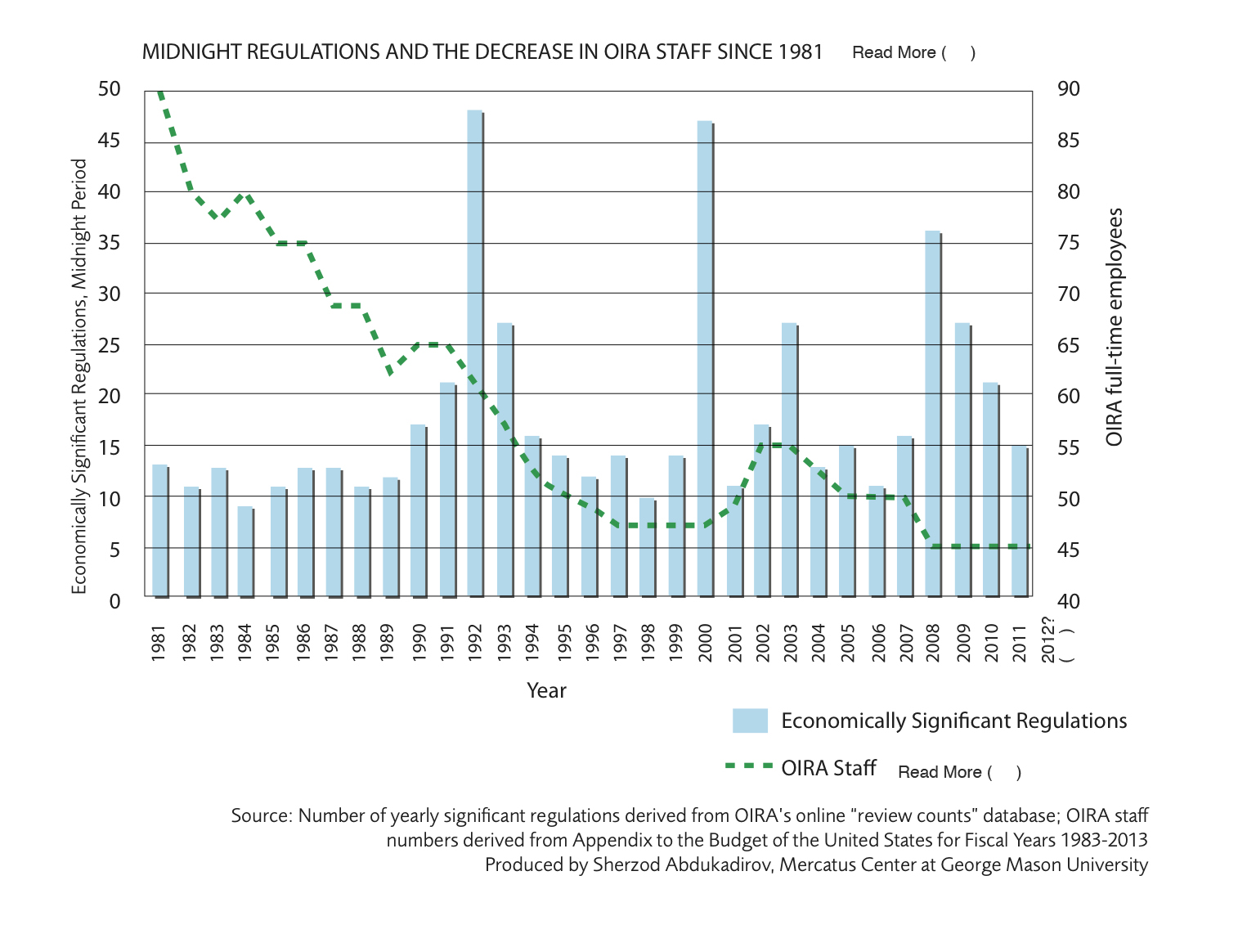From: Mercatus Center/George Mason University
By Sherzod Abdukadirov
Every four years, the number of new federal regulations surges during the “midnight” period between the Presidential Election Day and Inauguration Day. This surge is seen when an incumbent president is reelected; however, it is considerably higher when there is a change in administrations. Freed from many of the normal political constraints, administrations use the midnight period to enact sweeping and controversial regulations. Once finalized, regulations are difficult to repeal.
Agencies are required to conduct regulatory analysis for economically significant regulations (i.e., those with an impact on the economy exceeding $100 million). Among other considerations, regulatory analysis compares the costs and benefits of regulatory alternatives to ensure efficient outcomes. The White House Office of Information and Regulatory Affairs (OIRA) checks the quality of the regulatory analysis that accompanies each new proposed regulation.
Compared with non-election years, the number of economically significant regulations submitted for OIRA review more than doubles during midnight periods when control of the White House switches to a different party. The surge is rarely accompanied by an increase in OIRA’s budget or staff. Thus, OIRA can be overwhelmed during midnight periods, resulting in rushed, flawed oversight. The surge undermines the quality check that all proposed regulations are supposed to undergo. When the quality of analysis for new regulations is low, the result is the inefficient use of public resources to deal with society’s problems.
